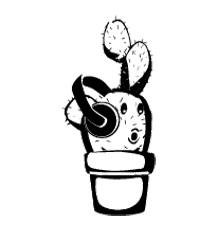 A conocernos
A conocernos
In this instructional module, we will learn how to greet friends and family members, and people we may not know very well. Think about how you greet people in English. Do you use different expressions depending on who the person is? What social cues (e.g., age) do you rely on? Do you think greetings in English differ from greetings in Spanish? Let’s have a look… Pay attention to the following conversations and see if you can notice some social patterns.
Situación 1. Rosy and her boyfriend Ramón are having lunch with Rosy’s mother. Ramón and Rosy’s mother are meeting for the first time.
Rosy: Mamá de Rosy: Rosy: Mamá de Rosy: Ramón: Mamá de Rosy:
Situación 2. Mariana and Kareza are students at Texas A&M University and are very good friends. Mariana is with her new friend Jessica. On their way to class, they see Mariana’s good friend Kareza. Kareza and Jessica meet for the first time.

Kareza:
Mariana:
Jessica:
Kareza:
Jessica:
Kareza:
Jessica:
Mariana:
- As the previous dialogues show, in the Spanish-speaking world, when you greet someone or you introduce yourself, there are two types of situations: formal and informal. In order to use socially-appropriate forms, it is important to know the difference between the expressions and structures you need in these two types of situations. Let’s have a look…
- Introductions in an informal situation: When you meet someone who is your same age or younger than you, you can ask these questions:
- To ask someone’s name: ¿Cuál es tu nombre? / ¿Cómo te llamas?
- To ask where someone is from: ¿De dónde eres?
- Introductions in a formal situation: When you meet someone who is older than you or you are in a professional situation, you can ask these questions:
- To ask someone’s name: ¿Cuál es su nombre? / ¿Cómo se llama?
- To ask where someone is from: ¿De dónde es usted?
Situación 3. Dr. Suárez and Dr. Campos are new colleagues in the Department of Hispanic Studies. They are meeting for coffee to discuss a possible collaboration on a grant.
Dr. Suárez:
Dra. Campos:
Dr. Suárez:
Dra. Campos:
Dr. Suárez:
¿Comprendiste? The objective of this section is to check for your understanding of the dialogues/texts presented in each of the modules. This section is intended to help you analyze critically and appropriately the multimodal text presented. You can use other resources such as the Hablemos más section below to get extra help to answer the questions posited.
- Is Situación 1 formal or informal? How can you tell whether the conversation is formal or informal? What expressions led you to this conclusion? Would you have changed the register in this situation? Why or why not?
- Situación 2: Why is the conversation informal when Jessica and Kareza meet for the first time? What does this tell you about the use of informal expressions in Spanish? What are the similarities and differences between this exchange and the one that you would have had in English?
- Compare Situación 2 and Situación 3 and write a few ideas on the different use of greetings in formal and informal. Why did Dr. Suarez and Dr. Campos use a different register than Kareza and Jessica?
Based on your newly-gained knowledge, what are some ways you can tell a conversation will be formal or informal? What social cues are important?
Click on the following button to practice your new vocabulary and structures.
Now let’s continue learning about greetings in Spanish. Let’s go to



